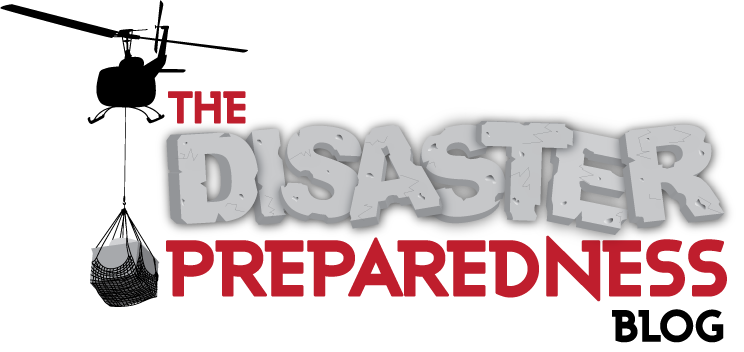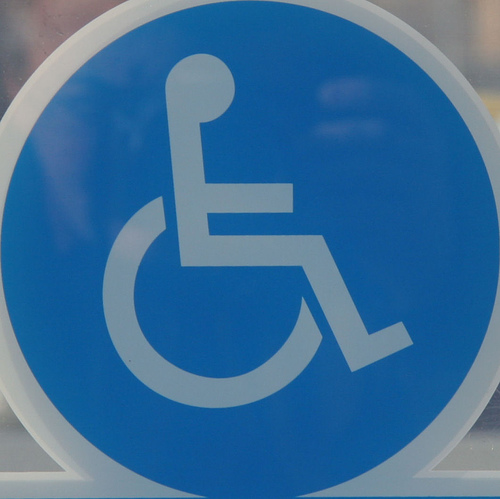I'm frequently asked what you should do during an earthquake, and after the yesterdays (April 4, 2010) 7.2 Earthquake in Baja California, Mexico my in box gets flooded with requests on what is best and requests for posts on earthquake safety goes up.
Though I have posted Earthquake Tips before it is buried in a hard to find place, so to please my readers and those concerned here are some recent and up to date Earthquake Tips.
Here are some USGS Earthquake Preparedness FAQ's
NOTE: These tips are directly from FEMA
What to Do Before an Earthquake
Earthquakes strike suddenly, violently and without warning. Identifying potential hazards ahead of time and advance planning can reduce the dangers of serious injury or loss of life from an earthquake. Repairing deep plaster cracks in ceilings and foundations, anchoring overhead lighting fixtures to the ceiling, and following local seismic building standards, will help reduce the impact of earthquakes.
Six Ways to Plan Ahead
- Check for Hazards in the Home
- Fasten shelves securely to walls.
- Place large or heavy objects on lower shelves.
- Store breakable items such as bottled foods, glass, and china in low, closed cabinets with latches.
- Hang heavy items such as pictures and mirrors away from beds, couches, and anywhere people sit.
- Brace overhead light fixtures.
- Repair defective electrical wiring and leaky gas connections. These are potential fire risks.
- Secure a water heater by strapping it to the wall studs and bolting it to the floor.
- Repair any deep cracks in ceilings or foundations. Get expert advice if there are signs of structural defects.
- Store weed killers, pesticides, and flammable products securely in closed cabinets with latches and on bottom shelves.
- Identify Safe Places Indoors and Outdoors
- Under sturdy furniture such as a heavy desk or table.
- Against an inside wall.
- Away from where glass could shatter around windows, mirrors, pictures, or where heavy bookcases or other heavy furniture could fall over.
- In the open, away from buildings, trees, telephone and electrical lines, overpasses, or elevated expressways.
- Educate Yourself and Family Members
- Contact your local emergency management office or American Red Cross chapter for more information on earthquakes. Also read the "How-To Series" for information on how to protect your property from earthquakes.
- Teach children how and when to call 9-1-1, police, or fire department and which radio station to tune to for emergency information.
- Teach all family members how and when to turn off gas, electricity, and water.
- Have Disaster Supplies on Hand
- Flashlight and extra batteries.
- Portable battery-operated radio and extra batteries.
- First aid kit and manual.
- Emergency food and water.
- Nonelectric can opener.
- Essential medicines.
- Cash and credit cards.
- Sturdy shoes.
- Develop an Emergency Communication Plan
- In case family members are separated from one another during an earthquake (a real possibility during the day when adults are at work and children are at school), develop a plan for reuniting after the disaster.
- Ask an out-of-state relative or friend to serve as the "family contact." After a disaster, it's often easier to call long distance. Make sure everyone in the family knows the name, address, and phone number of the contact person.
- Help Your Community Get Ready
- Publish a special section in your local newspaper with emergency information on earthquakes. Localize the information by printing the phone numbers of local emergency services offices, the American Red Cross, and hospitals.
- Conduct a week-long series on locating hazards in the home.
- Work with local emergency services and American Red Cross officials to prepare special reports for people with mobility impairments on what to do during an earthquake.
- Provide tips on conducting earthquake drills in the home.
- Interview representatives of the gas, electric, and water companies about shutting off utilities.
- Work together in your community to apply your knowledge to building codes, retrofitting programs, hazard hunts, and neighborhood and family emergency plans.
What to Do During an Earthquake
Stay as safe as possible during an earthquake. Be aware that some earthquakes are actually foreshocks and a larger earthquake might occur. Minimize your movements to a few steps to a nearby safe place and if you are indoors, stay there until the shaking has stopped and you are sure exiting is safe.
If indoors
- DROP to the ground; take COVER by getting under a sturdy table or other piece of furniture; and HOLD ON until the shaking stops. If there isn’t a table or desk near you, cover your face and head with your arms and crouch in an inside corner of the building.
- Stay away from glass, windows, outside doors and walls, and anything that could fall, such as lighting fixtures or furniture.
- Stay in bed if you are there when the earthquake strikes. Hold on and protect your head with a pillow, unless you are under a heavy light fixture that could fall. In that case, move to the nearest safe place.
- Use a doorway for shelter only if it is in close proximity to you and if you know it is a strongly supported, loadbearing doorway.
- Stay inside until the shaking stops and it is safe to go outside. Research has shown that most injuries occur when people inside buildings attempt to move to a different location inside the building or try to leave.
- Be aware that the electricity may go out or the sprinkler systems or fire alarms may turn on.
- DO NOT use the elevators.
If outdoors
- Stay there.
- Move away from buildings, streetlights, and utility wires.
- Once in the open, stay there until the shaking stops. The greatest danger exists directly outside buildings, at exits and alongside exterior walls. Many of the 120 fatalities from the 1933 Long Beach earthquake occurred when people ran outside of buildings only to be killed by falling debris from collapsing walls. Ground movement during an earthquake is seldom the direct cause of death or injury. Most earthquake-related casualties result from collapsing walls, flying glass, and falling objects.
If in a moving vehicle
- Stop as quickly as safety permits and stay in the vehicle. Avoid stopping near or under buildings, trees, overpasses, and utility wires.
- Proceed cautiously once the earthquake has stopped. Avoid roads, bridges, or ramps that might have been damaged by the earthquake.
If trapped under debris
- Do not light a match.
- Do not move about or kick up dust.
- Cover your mouth with a handkerchief or clothing.
- Tap on a pipe or wall so rescuers can locate you. Use a whistle if one is available. Shout only as a last resort. Shouting can cause you to inhale dangerous amounts of dust.
What to Do After an Earthquake
- Expect aftershocks. These secondary shockwaves are usually less violent than the main quake but can be strong enough to do additional damage to weakened structures and can occur in the first hours, days, weeks, or even months after the quake.
- Listen to a battery-operated radio or television. Listen for the latest emergency information.
- Use the telephone only for emergency calls.
- Open cabinets cautiously. Beware of objects that can fall off shelves.
- Stay away from damaged areas. Stay away unless your assistance has been specifically requested by police, fire, or relief organizations. Return home only when authorities say it is safe.
- Be aware of possible tsunamis if you live in coastal areas. These are also known as seismic sea waves (mistakenly called "tidal waves"). When local authorities issue a tsunami warning, assume that a series of dangerous waves is on the way. Stay away from the beach.
- Help injured or trapped persons. Remember to help your neighbors who may require special assistance such as infants, the elderly, and people with disabilities. Give first aid where appropriate. Do not move seriously injured persons unless they are in immediate danger of further injury. Call for help.
- Clean up spilled medicines, bleaches, gasoline or other flammable liquids immediately. Leave the area if you smell gas or fumes from other chemicals.
- Inspect the entire length of chimneys for damage. Unnoticed damage could lead to a fire.
- Inspect utilities.
- Check for gas leaks. If you smell gas or hear blowing or hissing noise, open a window and quickly leave the building. Turn off the gas at the outside main valve if you can and call the gas company from a neighbor's home. If you turn off the gas for any reason, it must be turned back on by a professional.
- Look for electrical system damage. If you see sparks or broken or frayed wires, or if you smell hot insulation, turn off the electricity at the main fuse box or circuit breaker. If you have to step in water to get to the fuse box or circuit breaker, call an electrician first for advice.
- Check for sewage and water lines damage. If you suspect sewage lines are damaged, avoid using the toilets and call a plumber. If water pipes are damaged, contact the water company and avoid using water from the tap. You can obtain safe water by melting ice cubes.
More information for further reading:
Southern California
Putting Down Roots in Earthquake Country (read online)
Putting Down Roots in Earthquake Country (PDF Download)
Request Free Copies of Handbook
Enchando Raíces en Tierra de Terremotos (Leer en español)
Echando Raíces en Tierra de Terremotos (PDF)
Solicite una copia impresa en español
San Francisco Bay Area Region
Putting Down Roots in EarthQuake Country Bay Area Version
Protecting Your Family From Earthquakes - Spanish and English Version
Protecting Your Family From Earthquakes - English, Chineese, Vietnamese, and Korean Version
Living on Shaky Ground: How to Survive Earthquakes and Tsunamis in Northern California
Business
7 Steps to an Earthquake Resilient Business
Now you can listen to our Podcast on Earthquake Safety
 Monday, January 16, 2012 at 3:34PM | |
Monday, January 16, 2012 at 3:34PM | |  Email Article
Email Article 







